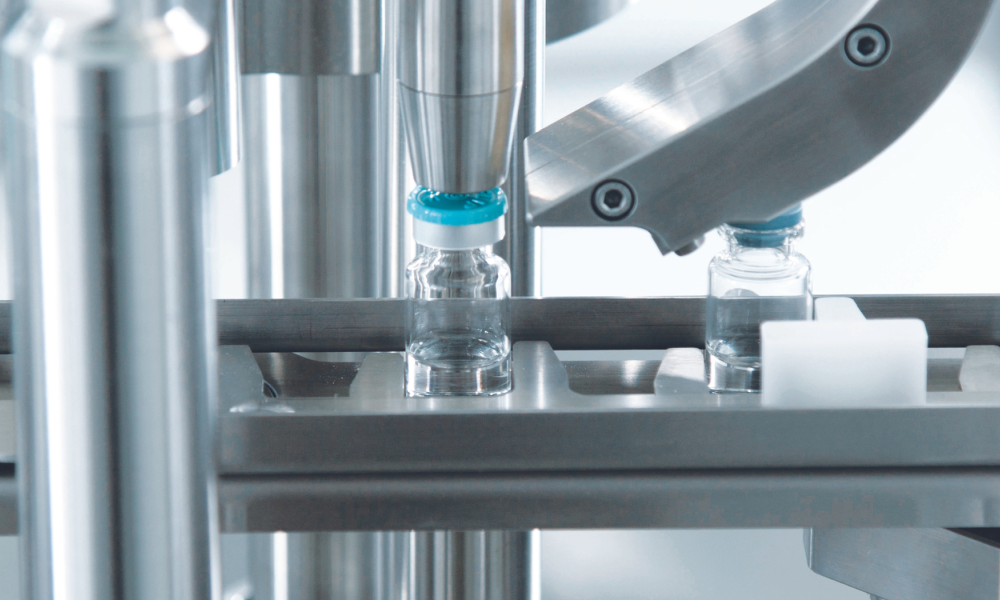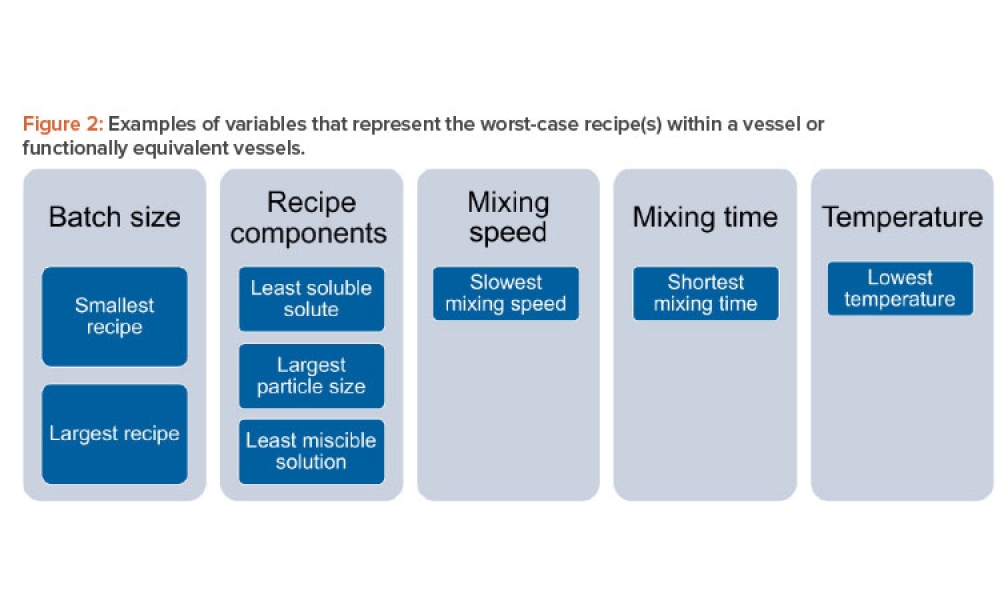Removing Regulatory Hurdles for Continuous Pharmaceutical Manufacturing

Continuous manufacturing (CM) challenged regulators’ expectations and regulatory frameworks. This article discusses how US regulators addressed the regulatory hurdles related to CM to broaden its adoption through engagement, regulatory science, guidance, and international harmonization.
Continuous reactions and processes are a fundamental concept taught to all undergraduate chemical engineers, often in their junior year. The concept teaches students about reaction kinetics and process dynamics and for many it draws the first clear link between the molecular principles of chemistry and the mathematical principles of calculus. Most chemical engineering curricula also include a capstone design course in which soon-to-be-graduates tackle process design problems that approximate the challenges they might encounter in the workforce.
For many years, undergraduate students have tackled the design, development, and financial justification of continuous chemical processes that are found in the commodity chemicals, food and beverage, and petrochemical manufacturing industries. Generally, CM is fit for processes with high repeatability requirements, as is the case for pharmaceuticals.1
Burgeoning chemical engineers joining the pharmaceutical manufacturing workforce are often surprised to discover that few manufacturers have adopted CM for either drug substance (reaction chemistry) or drug product (formulation). As these engineers understand, CM may not be fit for every drug substance or drug product manufacturing process, but it can bring potential advantages in many cases, most notably better efficiency, reduced costs, and improved process control. For example, one pharmaceutical company that switched to CM reported a 50% reduction in operating costs, a 33% reduction in waste, an 80% reduction in manufacturing and testing cycle time, and a 66% reduction in time from testing to release.2 ,3
Key differences between CM of pharmaceuticals versus other chemicals relate primarily to volume and runtime. For some commodity chemicals, CM over very long runtimes is possible and financially feasible. For pharmaceuticals, however, the continuous production volume, and hence runtime, is flexible to meet variable market demand. For example, a runtime can be short when the drug is used by a small patient population. Some continuous pharmaceutical processes are designed to reduce the runtime associated with a batch process. This high-value/low-volume proposition leads process designers to consider a continuous process based heavily on their desire for a high level of process control. In the past, commercial process equipment for CM was only available at large volume production levels, beyond the scale desired by many pharmaceutical manufacturers.4
Over the past two decades, process equipment has become available at scales more adaptable to continuous pharmaceutical production.5 In addition, there are human elements to consider. For example, one pharmaceutical company reported adopting continuous technology when faced with the challenge of designing a commercial Grignard reaction and accounting for its associated spontaneous heat release.6 In this case, there was a benefit to using a safe and controlled continuous process with minimal operator involvement and less manual material movement between unit operations.
Regulatory Support and Performance
As pharmaceutical process designers began recognizing the benefits of CM in the mid-2010s, FDA’s Center for Drug Evaluation and Research (CDER) began engaging with prospective manufacturers to discuss, identify, and resolve potential technical and regulatory issues regarding the development and implementation of CM prior to filing regulatory submissions. In 2014, CDER established the Emerging Technology Program (ETP) within its Office of Pharmaceutical Quality to better facilitate the adoption of emerging technologies such as CM.7
A critical feature of the ETP is representation from all relevant FDA quality assessment and inspection programs, from early engagement with stakeholders through application submission and assessment. Early interactions can focus on the technology and its application and do not need to be specific to a product or regulatory submission. Owing to the engagements through the ETP and the addition of key personnel with experience in CM in the petrochemical industry, CDER approved the first regulatory submission incorporating CM for a small molecule drug product in 2015.
The following year, CDER approved the first switch from batch manufacturing to CM for a drug product. Since then, more pharmaceutical manufacturers have started to both develop and implement CM for commercial production. The ETP has now accepted 50 proposals related to CM and CDER has approved a number of diverse submissions, including:
- A drug product employing CM for active pharmaceutical ingredient synthesis
- A continuous biomanufacturing process
- A drug product that can be made using a batch or continuous process
- Three drug products that can be made using the same CM line
With the benefit of hindsight, 2014 may have been the tipping point for CM adoption for pharmaceuticals. In addition to forming the ETP, CDER participated in the first International Symposium on Continuous Manufacturing of Pharmaceuticals, sponsored by the Novartis-MIT Center for Continuous Manufacturing, to discuss the opportunities, technologies, and regulation of CM.
This meeting resulted in eight seminal white papers that defined some of the initial challenges and benefits for the pharmaceutical industry in adopting CM related to regulatory considerations,8 CM for finished dosage forms,4 continuous bioprocessing,9 equipment and analytical companies,10 control systems engineering,11 CM for drug substances,12 future supply chains,1 and the development and manufacturing structure.13 An FDA-authored paper indicating support for the implementation of CM using science- and risk-based approaches followed soon thereafter.14 The fourth such symposium was recently held in April 2023, in part to celebrate the CM implementation successes that have occurred since the first meeting in 2014.
It is instructive to revisit the regulatory concerns shared in those early papers. These included, for example, defining a batch, establishing representative sampling, handling deviations, forming testing rationale, setting raw material specifications, identifying sources of variability, and enabling manufacturing changes. Two of the most significant policy developments since 2014 have been the release of the Quality Considerations for Continuous Manufacturing draft guidance in 2019 and the International Council for Harmonisation (ICH) Q13 guidance on CM of drug substances and drug products in 2023.15
The guidance covers the regulatory considerations identified in 2014, including the definition of a batch (which can be defined in terms of quantity of output or input material or runtime at a defined mass flow rate), process dynamics (including sampling and diversion strategies), changes in production output (including increasing run time or flow rate, scale-up, or scale-out), and continuous process verification. In addition to the FDA, health authorities in Canada, Europe, Australia, Japan, Switzerland, and New Zealand have also approved applications with CM for the production of solid oral dosage forms.16
Now some manufacturers are moving beyond CM of drug substance or drug product and are instead developing CM of drug substance and drug product. End-to-end continuous processes flow from starting materials to finished dosage forms. CDER funded the National Academies of Sciences, Engineering, and Medicine (NASEM) to host a series of workshops that resulted in a consensus study report “Innovations in Pharmaceutical Manufacturing on the Horizon: Technical Challenges, Regulatory Issues, Recommendations.”17
In this report, NASEM foretold manufacturing processes that integrate all processing steps from synthesis of an active pharmaceutical ingredient to final drug product. Such end-to-end continuous processes bring different regulatory considerations; for example, sequential continuous unit operations eliminate the accumulation of process intermediates and perhaps even isolated drug substance.
Because much of the existing regulatory framework is built around the manufacture of a discrete drug substance and the separate manufacture of drug product using isolated drug substance, end-to-end CM challenges the regulatory expectations of the existing framework. To clarify regulatory expectations for end-to-end CM, ICH Q13 devoted an annex to describing the unique scientific and regulatory considerations of an end-to-end CM process for solid oral drug products. In addition, there are related technologies that might play a role in this new manufacturing paradigm, such as artificial intelligence, machine learning, and distributed manufacturing. These technologies might even combine to result in end-to-end, distributed strategies com-prising CM units using artificial intelligence to enable adaptive process and product quality controls.
CM may not be fit for every drug substance or drug product manufacturing process, but it can bring potential advantages in many cases, most notably better efficiency, reduced costs, and improved process control.
To address the regulatory framework for these additional technologies, CDER began an initiative called the Framework for Regulatory Advanced Manufacturing Evaluation (FRAME) to prepare a regulatory framework to support the adoption of prioritized advanced manufacturing technologies that could bring benefits to patients.18 In 2022, CDER released a discussion paper for stakeholder feedback on distributed and point-of-care manufacturing and in 2023 released a discussion paper on artificial intelligence in pharmaceutical manufacturing.19 ,20 The purpose of these discussion papers is to capture early stakeholder feedback to proactively prepare the regulatory framework for the implementation of critical advanced pharmaceutical manufacturing technologies.
Regulatory Science and Research Performance
Knowledge and training enable the regulatory ability and readiness to evaluate CM technology. CDER’s science and research program has fueled over 60 intramural and extramural research projects to build a knowledge base for advanced manufacturing technologies, including CM. CDER-funded research on CM has included work on process development, advanced control strategies, modeling approaches, and Industry 4.0.21 Because CM can apply to diverse product types, research includes CM of active pharmaceutical ingredients, biotechnology drug products, and small molecule drug products.22 ,14
Researchers have covered continuous chemistry approaches such as continuous crystallization23 ,24 and flow chemistry25 ,26 as well as a material library27 related to drug product manufacturing. Biotechnology research has covered continuous biomanufacturing issues such as viral clearance,28 ,29 cell separation,30 and in-line process monitoring.31 Research is preparing for CM of increasingly diverse drug product types in the future such as extended-release tablets,32 ,33 liposomal formulations,34 and polymeric micelles.35
Significant progress has already been made in the development and implementation of integrated process models related to blending,36 flow-sheet simulation,37 ,38 managing abnormal conditions,39 and twin-screw wet granulation.40 Process models are useful tools to estimate the impact of potential variations of model inputs (e.g., the process and equipment conditions, raw materials, and environmental factors) on model outputs (e.g., product quality attributes). The results produced from intramural and extramural research projects are fundamental to the performance and impact of CDER’s advanced manufacturing initiatives.
Though advanced manufacturing technologies are employed in less than 1% of human drug applications to the FDA, more than 10% of CDER’s active research project portfolio addresses some element of advanced manufacturing. The FDA uses the results of these research projects to develop regulatory recommendations for the industry to guide product and technology development; knowledge to inform new standards, guidances, and policies; and materials for training FDA staff.
Specifically, outcomes of CDER-funded research were used to develop recommendations to guide product and technology development under the ETP, evaluate regulatory submissions that included CM, and inform the ICH Q13 guidance and the developing ICH Q5A guideline revision, Quality of Bio-technological Products: Viral Safety Evaluation of Biotechnology Products Derived from Cell Lines of Human or Animal Origin.
Process models developed through CDER research have been applied to aid the assessment of CM processes in regulatory submissions. CDER researchers who developed these models were recently awarded the American Institute of Chemical Engineers Pharmaceutical Discovery, Development, and Manufacturing Forum Award for Excellence in Integrated Quality by Design Practice. The national award recognized their contributions in advancing the use of modeling and simulation for quality risk management of CM processes.41 Models can be used to visualize differences between manufacturing processes and control strategies, a powerful tool for training FDA staff and implementing modeling and simulation in the industry. The knowledge gained from CDER-funded research on CM drives toward the goal of better design and control of manufacturing processes in pharmaceutical supply chains.
Removing Regulatory Hurdles
Although there are financial and logistical challenges to adopting CM, some myths persist. It has been clear that CDER supports the adoption of CM, but some have opined that C-suite leaders continue to resist CM acceptance.42 Still others are concerned that the FDA is mandating the use of CM. The FDA approves drugs if they comply with applicable standards, regulations, and laws. There is no regulatory requirement to use CM. While there can be public health benefits to CM, such as increased reliability of supply, these benefits may be realized for some but not all drug products. Critics are quick to note that CM has thus far been approved for innovator drug products but no generic products.
However, CM is not just for innovator companies; multiple developers of generic drugs have engaged with CDER’s ETP on the use of advanced manufacturing technologies for generic drug products. Another concern of generic drug companies is that they might be required to implement CM if an innovator company has done so. There is no regulatory basis to this claim. If an innovator company implements CM, the standards for generic drug application assessment and approval would not change. Specification criteria are established based on relevance to the patient and not on process capability. Additionally, some are hesitant to use CM because they are afraid it will take the FDA longer to review and approve their application.17
| Regulatory Hurdles for CM | FDA Actions |
|---|---|
| Manufacturers were hesitant to adopt CM without additional engagement from the FDA. | In 2014, CDER created the ETP to support stakeholders in developing and implementing CM. |
| Manufacturers were hesitant to adopt CM before the FDA approved a product manufactured with CM. | In 2015, CDER approved the first product manufactured with CM, and has since accepted 50 proposals from industry into the ETP and approved 13 more submissions. |
| Manufacturers were hesitant to adopt CM for existing products before the FDA approved a switch from batch manufacturing to CM. | In 2016, CDER approved the first switch from batch to CM for a drug product. |
| Manufacturers were hesitant to adopt CM without guidance from the FDA. | In 2019, FDA released the draft guidance Quality Considerations for Continuous Manufacturing. In 2022, FDA published the draft revision to the guidance Quality of Biotechnological Products: Viral Safety Evaluation of Biotechnology Products Derived from Cell Lines of Human or Animal Origin, which includes considerations for viral safety evaluation for CM. |
| Manufacturers were hesitant to adopt CM because they feared the timelines for FDA approval might be longer. | In 2022, CDER released data showing that applications using CM were approved faster than similar applications using batch manufacturing. |
| Manufacturers were hesitant to adopt CM without internationally harmonized guidance. | In 2023, the FDA released final internationally harmonized guidance Q13 Continuous Manufacturing of Drug Substances and Drug Products. |
Although there is no prescribed review timeline for CM applications, other than those related to user fee goal dates, CDER conducted a self-audit of the CM regulatory submissions and outcomes in the US.43 There is an unfortunate prevailing assumption among manufacturers that applications with new technologies take the FDA longer to approve, but this audit found the opposite.
Through early engagement with CDER under ETP, CM applicants had shorter times to approval and marketing compared to batch applicants: three months faster to approval and four months faster to marketing. This faster approval translated to several hundred million dollars in early revenue for these manufacturers.
This audit also found no substantial regulatory barriers associated with common regulatory interactions related to implementation of CM and faster scale-up as compared to batch manufacturing. The result was earlier patient access to medicines and a potential $100–$500 million US in early revenue benefit for manufacturers. Over time, major regulatory hurdles for CM have been cleared (see Table 1).
Some key findings of the financial benefits of CM are worth emphasizing here. In a study of the comparative investment analysis of batch versus continuous pharmaceutical manufacturing, the lower costs associated with CM are expected to lead to brand and generic companies investing in CM.44 Further, CM makes manufacturing solid oral dosage form pharmaceuticals more economically attractive in the US than foreign manufacturing, and investing in CM in the US under current tax rates results in positive value over batch manufacturing in China or India for brand and generic companies.
This analysis suggests that CM of solid oral dose pharmaceuticals in the US has the potential to be more economically attractive than foreign manufacturing. Indeed, it seems CM has already been an effective strategy in promoting domestic manufacturing, as 8 of the 13 drug products made using CM are produced in facilities in the US. The development of and funding for CM for human drugs and biologics has exploded in the COVID-19 era.45 Federal funding supported the development of domestic CM facilities for drug substances and drug products, and some of these facilities are now approaching commercial readiness.
Conclusion
In the future, CM, like any technology, cannot remain in an emerging status forever. An important feature of the ETP is the graduation of a technology such that an application’s assessment can be handled by standard, trained CDER review staff. As the ETP passed the landmark occasion of the 150th FDA-sponsored emerging technology meeting, it reached another significant milestone with the first technology to graduate from the ETP: continuous direct compression (CDC).
CDC is a pharmaceutical manufacturing process that consists of dispensing, mixing, and compressing using equipment that is integrated, resulting in no breaks in the process. CDC can improve the assurance of product quality by minimizing human intervention and taking advantage of process analytical technology. Graduation means that industry developed the sufficient regulatory submissions related to the technology and CDER expanded its capability through comprehensive training of its quality assessors on CDC technology, such that any application assessment team can fully handle such a technology when referenced in a submission, independent of the ETP. Due to the expanding workload of the ETP, CDER has begun implementing ETP program enhancements to improve strategy and operation and to enhance communication with those adopting new technologies. Eventually all CM technologies will graduate from the ETP.
New legislation also brings new changes and opportunities for the regulation of advanced manufacturing technologies, such as CM. For example, the reauthorized user fee program of the Prescription Drug User Fee Act (PDUFA VII) aims to advance the implementation of innovative manufacturing technologies. To this end, the FDA will conduct a workshop that includes industry and public feedback and publish a draft strategy document for public comment on innovative manufacturing technologies. This document will outline the strategy to facilitate the implementation of innovative manufacturing technologies, including addressing barriers to their adoption.
These engagement opportunities will help the FDA further encourage submissions for products made using innovative manufacturing technologies that ensure product quality and a robust manufacturing process. The Consolidated Appropriations Act 2023 under the Food and Drug Omnibus Reform Act of 2022 (FDORA) pushes this concept further. For example, many of its provisions relate to advanced manufacturing, including issuing guidance, holding a public meeting related to the designation of advanced manufacturing technologies, and establishing the ETP in statute. As long as new manufacturing technologies are developed, there will be opportunities to implement innovations in pharmaceutical manufacturing, and concomitant needs for regulatory support.
- 1 a b Srai, J. S., C. Badman, M. Krumme, M. Futran, and C. Johnston. “Future Supply Chains Enabled by Continuous Processing—Opportunities and Challenges.” Continuous Manufacturing Symposium, 20–21 May 2014. Journal of Pharmaceutical Sciences 104, no. 3 (2015): 840–49.
- 2Kuehn, S. “Janssen Embraces Continuous Manufacturing for Prezista.” Pharmaceutical Manufacturing. Published 8 October 2015.
- 3Macdonald, G. “Janssen Working on Other Continuous Processes Post US FDA OK for Prezista.” OutsourcingPharma. Updated 19 April 2016.
- 4 a b Byrn, S., M. Futran, H. Thomas, E. Jayjock, N. Maron, R. F. Meyer, A. S. Myerson, M. P. Thien, and B. L. Trout. “Achieving Continuous Manufacturing for Final Dosage Formation: Challenges and How to Meet Them.” Continuous Manufacturing Symposium, 20–21 May 2014. Journal of Pharmaceutical Sciences 104, no. 3 (2015): 792–802.
- 5Rosas, J. G., P. Brush, B. Thompson, C. Miller, P. Overton, N. Tugby, D. Stoliarskaia, S. Hurley, M. Ramasamy, and S. L. Conway. “Implementation of a Fully Integrated CM Direct Compression and Coating Process at a Commercial Pharmaceutical Facility—Part 2: PAT and RTD Results for Normal Operational Conditions Batches.” International Journal of Pharmaceutics 2023: 122814.
- 6Garguilo, L. “Safety Led Lilly to Leadership in Continuous Manufacturing.” Outsourced Pharma. Published 1 November 2022. https://www.outsourcedpharma.com/doc/safety-led-lilly-to-leadership-in-continuous-manufacturing-0001
- 7US Food and Drug Administration. “Guidance for Industry. Advancement of Emerging Technology Applications for Pharmaceutical Innovation and Modernization.” September 2017. https://www.fda.gov/files/drugs/published/Advancement-of-Emerging-Technology-Applications-for-Pharmaceutical-Innovation-and-Modernization-Guidance-for-Industry.pdf
- 8Allison, G., Y. T. Cain, C. Cooney, T. Garcia, T. G. Bizjak, O. Holte, N. Jagota, B. Komas, E. Korakianiti, and D. Kourti, D. “Regulatory and Quality Considerations for Continuous Manufacturing.” Continuous Manufacturing Symposium, 20–21 May 2014. Journal of Pharmaceutical Sciences 104, no. 3 (2015): 803–12.
- 9Konstantinov, K. B., and C. L. Cooney. “White Paper on Continuous Bioprocessing.” Continuous Manufacturing Symposium, 20–21 May 2014. Journal of Pharmaceutical Sciences 104, no. 3 (2015): 813–20.
- 10Page, T., H. Dubina, G. Fillipi, R. Guidat, S. Patnaik, P. Poechlauer, P. Shering, M. Guinn, P. Mcdonnell, and C. Johnston. “Equipment and Analytical Companies Meeting Continuous Challenges.” Continuous Manufacturing Symposium, 20–21 May 2014. Journal of Pharmaceutical Sciences 104, no. 3 (2015): 821–31.
- 11Myerson, A. S., M. Krumme, M. Nasr, H. Thomas, and R. D. Braatz. “Control Systems Engineering in Continuous Pharmaceutical Manufacturing.” Continuous Manufacturing Symposium, 20–21 May 2014. Journal of Pharmaceutical Sciences 104, no. 3 (2015): 832–39.
- 12Baxendale, I. R., R. D. Braatz, B. K. Hodnett, K. F. Jensen, M. D. Johnson, P. Sharratt, J. P. Sherlock, and A. J. Florence. “Achieving Continuous Manufacturing: Technologies and Approaches for Synthesis, Workup, and Isolation of Drug Substance.” Continuous Manufacturing Symposium, 20–21 May 2014. Journal of Pharmaceutical Sciences 104, no. 3 (2015): 781–91.
- 13Nepveux, K., J. P. Sherlock, M. Futran, M. Thien, and M. Krumme. “How Development and Manufacturing Will Need to Be Structured—Heads of Development/Manufacturing.” Continuous Manufacturing Symposium, 20–21 May 2014. Journal of Pharmaceutical Sciences 104, no. 3 (2015): 850–64.
- 14 a b Lee, S. L., T. F. O’Connor, X. Yang, C. N. Cruz, S. Chatterjee, R. D. Madurawe, C. M. Moore, X. Y. Lawrence, and J. Woodcock. “Modernizing Pharmaceutical Manufacturing: From Batch to Continuous Production.” Journal of Pharmaceutical Innovation 10, no. 3 (2015): 191–99. doi:10.1007/s12247-015-9215-8
- 15US Food and Drug Administration. “Guidance for Industry. Q13 Continuous Manufacturing of Drug Substances and Drug Products.” March 2023. https://www.fda.gov/media/165775/download
- 16Hausner, D., and C. Moore. “Continuous Manufacturing Current Status.” Pharmaceutical Engineering no. 38 (May/June 2018): 40–41.
- 17 a b The National Academies of Sciences, Engineering, Medicine. “Innovations in Manufacturing Drug Products.” In Innovations in Pharmaceutical Manufacturing on the Horizon: Technical Challenges, Regulatory Issues, and Recommendations. National Academies Press, 2021.
- 18Schenck, L., P. Patel, R. Sood, L. Bonaga, P. Capella, O., et al. “FDA/M-CERSI Co-Processed API Workshop Proceedings.” Journal of Pharmaceutical Science (9 January 2023). doi:10.1016/j.xphs.2023.01.006
- 19US Food and Drug Administration. “Discussion Paper. Distributed Manufacturing and Point-of-Care Manufacturing of Drugs.” October 2022. https://www.fda.gov/media/162157/download
- 20US Food and Drug Administration Center for Drug Evaluation and Research. “Discussion Paper. Artificial Intelligence in Drug Manufacturing.” 2023. https://downloads/regulations.gov/FDA-2023-N-0487-0002/attachment_1.pdf
- 21Arden, N. S., A. C. Fisher, K. Tyner, L. X. Yu, S. L. Lee, and M. Kopcha. “Industry 4.0 for Pharmaceutical Manufacturing: Preparing for the Smart Factories of the Future.” International Journal of Pharmaceutics 602, no. 120554 (1 June 2021). doi:10.1016/j.ijpharm.2021.120554
- 22Fisher, A. C., M. H. Kamga, C. Agarabi, K. Brorson, S. L. Lee, and S. Yoon. “The Current Scientific and Regulatory Landscape in Advancing Integrated Continuous Biopharmaceutical Manufacturing.” Trends in Biotechnology 37, no. 3 (2019): 253–67. doi:10.1016/j.tibtech.2018.08.008
- 23Domokos, A., B. Nagy, M. Gyurkes, A. Farkas, K. Tacsi, H. Pataki, Y. C. Liu, A. Balogh, P. Firth, B. Szilagyi, et al. “End-to-End Continuous Manufacturing of Conventional Compressed Tablets: From Flow Synthesis to Tableting Through Integrated Crystallization and Filtration.” International Journal of Pharmaceutics 581 (2020). doi:10.1016/j.ijpharm.2020.119297
- 24Salami, H., P. R. Harris, D. C. Yu, A. S. Bommarius, R. W. Rousseau, and M. A. Grover. “Periodic Wet Milling as a Solution to Size-Based Separation of Crystal Products from Biocatalyst for Continuous Reactive Crystallization.” Chemical Engineering Research and Design 177 (2022): 473–83. doi:10.1016/j.cherd.2021.11.007
- 25Yazdanpanah, N., C. N. Cruz, and T. F. O’Connor. “Multiscale Modeling of a Tubular Reactor for Flow Chemistry and Continuous Manufacturing.” Computers & Chemical Engineering 2019, 129. doi:10.1016/j.compchemeng.2019.06.035
- 26Glace, M., W. Wu, H. Kraus, D. Acevedo, T. D. Roper, and A. Mohammad. “Development of a Continuous Synthesis Process for Carbamazepine Using Validated In-Line Raman Spectroscopy and Kinetic Modelling for Disturbance Simulation.” Reaction Chemistry & Engineering 2023.
- 27Wang, Y. F., T. O’Connor, T. Y. Li, M. Ashraf, and C. N. Cruz. “Development and Applications of a Material Library for Pharmaceutical Continuous Manufacturing of Solid Dosage Forms.” International Journal of Pharmaceutics 569 (2019). doi:10.1016/j.ijpharm.2019.118551
- 28Chiang, M. J., M. Pagkaliwangan, S. Lute, G. Bolton, K. Brorson, and M. Schofield. “Validation and Optimization of Viral Clearance in a Downstream Continuous Chromatography Setting.” Biotechnology and Bioengineering 116, no. 9 (2019): 2292–302. doi:10.1002/bit.27023
- 29Lute, S., J. Kozaili, S. Johnson, K. Kobayashi, and D. Strauss. “Development of Small-Scale Models to Understand the Impact of Continuous Downstream Bioprocessing on Integrated Virus Filtration.” Biotechnology Progress 2020, 36 (3). doi:10.1002/btpr.2962
- 30Hong, J. S., N. Azer, C. Agarabi, and E. J. Fratz-Berilla. “Primary Clarification of CHO Harvested Cell Culture Fluid Using an Acoustic Separator.” JoVE Journal of Visualized Experiments 159 (2020). doi:10.3791/61161
- 31Morris, C., C. N. Madhavarao, S. Yoon, and M. Ashraf. “Single In-Line Biomass Probe Detects CHO Cell Growth by Capacitance and Bacterial Contamination by Conductivity in Bioreactor.” Biotechnology Journal 16, no. 12 (2021). doi:10.1002/biot.202100126
- 32Kotamarthy, L. X. Feng, A. Alayoubi, P. K. Bolla, R. Ramachandran, M. Ashraf, T. O’Connor, and A. Zidan. “Switching from Batch to Continuous Granulation: A Case Study of Metoprolol Succinate ER Tablets.” International Journal of Pharmaceutics 617 (2022): 121598.
- 33Zidan, A., L. Kotamarthy, R. Ramachandran, M. Ashraf, and T. O’Connor. “Optimization of Screw Design for Continuous Wet Granulation: A Case Study of Metoprolol Succinate ER Tablets.” International Journal of Pharmaceutics 623 (2022): 121964.
- 34Yenduri, G. A. P. Costa, X. Xu, and D. J. Burgess. “Impact of Critical Process Parameters and Critical Material Attributes on the Critical Quality Attributes of Liposomal Formulations Prepared Using Continuous Processing. International Journal of Pharmaceutics 619 (2022): 121700.
- 35Gupta, A., A. P. Costa, X. Xu, and D. J. Burgess. “Continuous Processing of Paclitaxel Polymeric Micelles.” International Journal of Pharmaceutics 607 (2021): 120946.
- 36Bhalode, P., and M. Ierapetritou. “Hybrid Multi-Zonal Compartment Modeling for Continuous Powder Blending Processes.” International Journal of Pharmaceutics 602 (2021). doi:10.1016/j.ijpharm.2021.120643
- 37Casas-Orozco, D., D. Laky, V. Wang, M. Abdi, X. Feng, E. Wood, C. Laird, G. V. Reklaitis, and Z. K. Nagy. “PharmaPy: An Object-Oriented Tool for the Development of Hybrid Pharmaceutical Flowsheets.” Computers & Chemical Engineering 153 (2021). doi:10.1016/j.compchemeng.2021.107408
- 38Tian, G., A. Koolivand, N. S. Arden, S. Lee, T. F. O’Connor. “Quality Risk Assessment and Mitigation of Pharmaceutical Continuous Manufacturing Using Flowsheet Modeling Approach.” Computers & Chemical Engineering 129 (2019). doi:10.1016/j.compchemeng.2019.06.033
- 39Ganesh, S., Q. L. Su, L. B. D. Vo, N. Pepka, B. Rentz, L. Vann, N. Yazdanpanah, T. O’Connor, Z. K. Nagy, and G. V. Reklaitis. “Design of Condition-Based Maintenance Framework for Process Operations Management in Pharmaceutical Continuous Manufacturing.” International Journal of Pharmaceutics 587 (2020). doi:10.1016/j.ijpharm.2020.119621
- 40Liu, H. L., B. Ricart, C. Stanton, B. Smith-Goettler, L. Verdi, T. O’Connor, S. Lee, and S. Yoon. “Design Space Determination and Process Optimization in At-Scale Continuous Twin Screw Wet Granulation.” Computers & Chemical Engineering 125 (2019): 271–86. doi:10.1016/j.compchemeng.2019.03.026
- 41Tian, G., A. Koolivand, Z. Gu, M. Orella, R. Shaw, and T. F. O’Connor. “Development of an RTD-Based Flowsheet Modeling Framework for the Assessment of In-Process Control Strategies.” AAPS PharmSciTech 22, no. 1 (5 January 2021). doi:10.1208/s12249-020-01913-8
- 42Garguilo, L. “FDA Leads, C-Suite Lags Continuous Manufacturing Acceptance.” Outsourced Pharma. Published 13 June 2019. https://www.outsourcedpharma.com/doc/fda-leads-c-suite-lags-continuous-manufacturing-acceptance-0001
- 43Fisher, A. C., W. Liu, A. Schick, M. Ramanadham, S. Chatterjee, R. Brykman, S. L. Lee, S. Kozlowski, A. B. Boam, S. C. Tsinontides, et al. “An Audit of Pharmaceutical Continuous Manufacturing Regulatory Submissions and Outcomes in the US.” International Journal of Pharmaceutics 622, no. 121778 (25 June 2022). doi:10.1016/j.ijpharm.2022.121778
- 44Rossi, C. V. “A Comparative Investment Analysis of Batch Versus Continuous Pharmaceutical Manufacturing Technologies.” Journal of Pharmaceutical Innovation 2022: 1–19.
- 45Wechsler, J. “Modern Drug Manufacturing Key to COVID-19 Response.” Pharmaceutical Technology 44, no. 5 (2020): 14–15.





